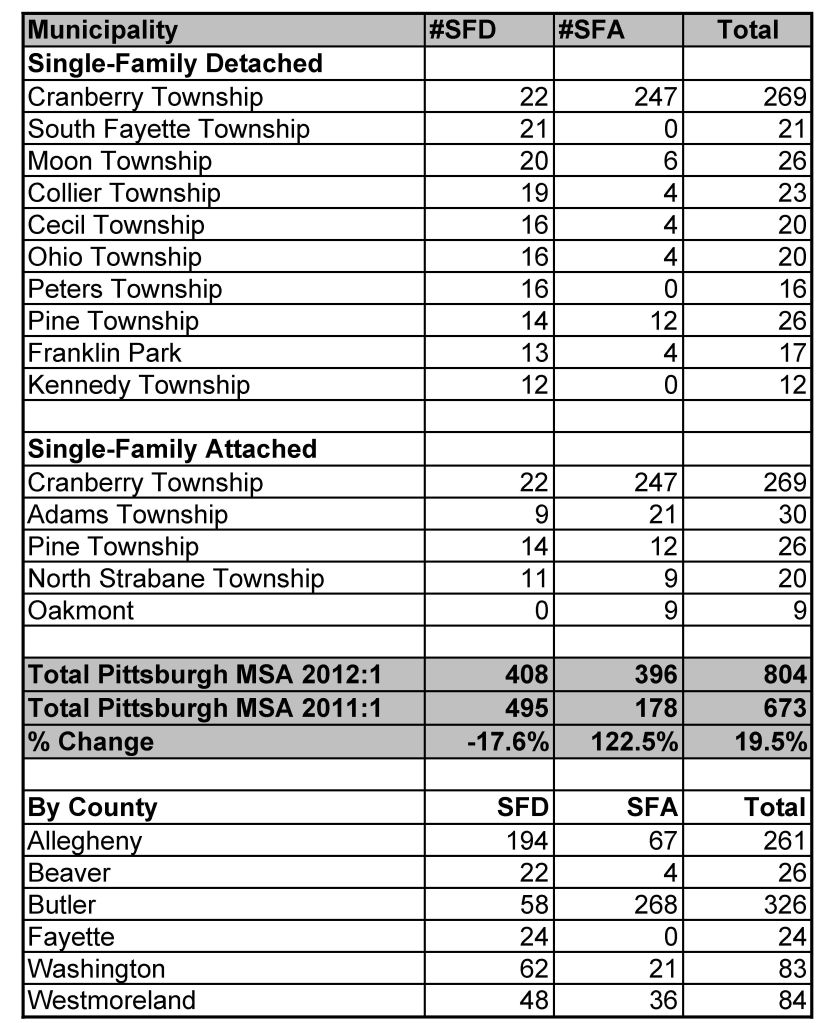Data from the Bureau of Labor Statistics shows job growth in metro Pittsburgh was roughly 25,000 in 2011. That growth, in concert with very little new construction in recent years has created generational low vacancy rates in the region and moved rents much higher over the past three years.
Estimates of office vacancy run between 8.6 percent and 11.2 percent, according to reports by CoStar, PA Commercial, CB-Richard Ellis and Jones Lang LaSalle at year’s end. According to Grubb & Ellis’ Office Trends Report for 2012 the office space available for sublease was also low. Estimated at just over 350,000 square feet, the office sublease inventory is expected to remain even with that of 2011, which is roughly half the ten-year average for space. Grubb & Ellis also tracked 406,000 square feet of office construction in 2011, only 15 percent of which was available for lease.
BreakingGround magazine’s research database is tracking over 3 million square feet in office projects being proposed within the past year. That total excludes the 800,000 square foot 4 PNC and 250,000 square foot Mylan Labs headquarters to be started this year, as well as the space being rumored as build-to-suit for corporate users like USSteel, Exxon Mobil, GNC and Guardian Security. And the developers include a roster of Pittsburgh firms who have delivered multiple offices into the market over the past decade, including Chaska Property Advisors, Spectra Development, Burns & Scalo Real Estate, Horizon Properties and the Elmhurst Group. The market awakening has revived the Oakland Portal project, with developer L. W. Molnar announcing plans for 300,000 square feet of office.
This litany of projects is speculative product, meaning that construction will be subject to success in pre-leasing and financing. The number of 100,000 square foot users conducting property searches currently indicates that more than a few will find anchor tenants in the coming year. Using historical ratios for planning to construction you would expect to see construction total one million square feet in 2012 in addition to the owner-occupied construction being planned. For all offices the new construction should be four times the volume of 2011.
Some of the specific projects are:
Burns & Scalo, two buildings at Southpointe II totaling 250,000 sq. ft. Horizon Properties, buildings at Southpointe II and Southpointe Town Center, 300,000 sq. ft. Keystone Property Group, two buildings at Keystone Summit in Marshall Twp. totaling 275,000 sq. ft. Elmhurst Group, Cranberry Crossings 90,000 sq. ft., Schenley Gardens in Oakland 110,000 sq. ft. & McClaren Woods 130,000 sq. ft. Chaska Properties, the Pittsburgh International Business Park in Moon Twp. totaling 350,000 sq. ft. In Cranberry, Creative Real Estate proposes 400,000 sq. ft. at the Summit at Cranberry Woods and Spectra Development is planning 1.1 million sq. ft. at the I-79/Route 228 interchange.
[twitter-follow screen_name='Jeffreyburd']

